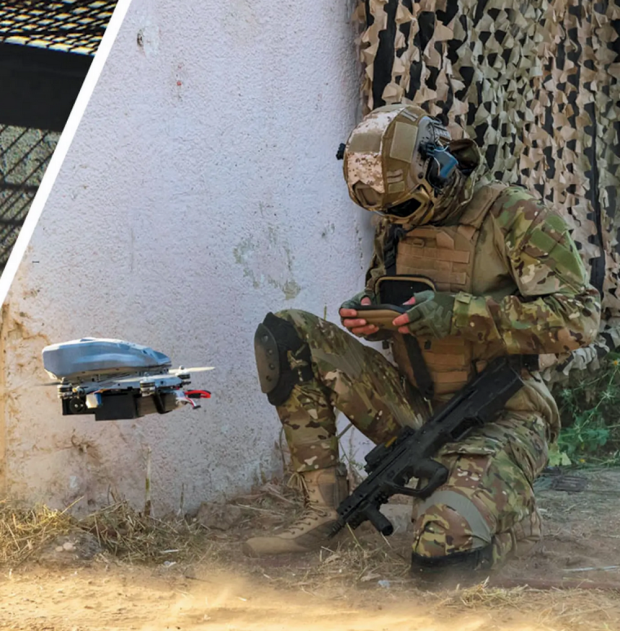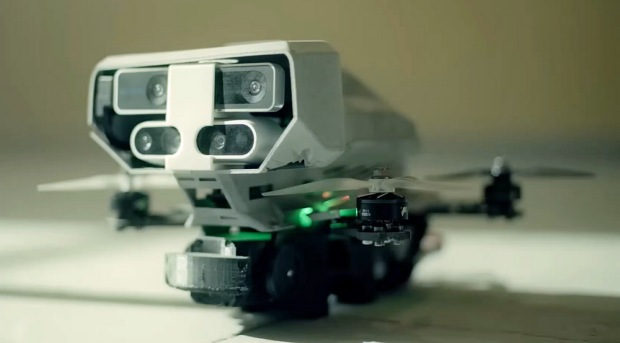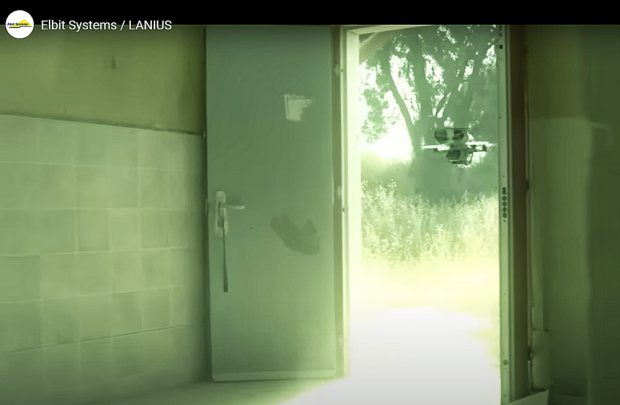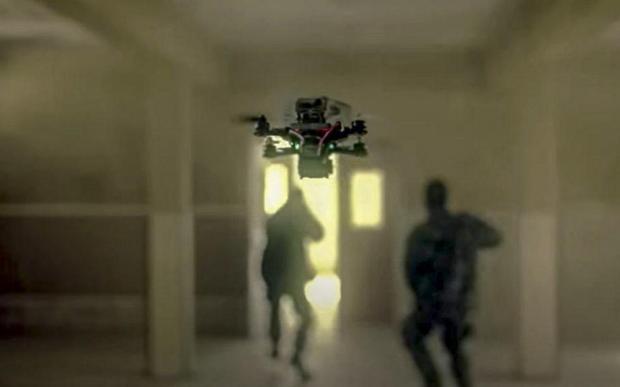Elbit Systems Unveils Lanius Anti-Personnel Attack Drone




Elbit Systems has unveiled a small unmanned quadcopter designed to locate, identify, and attack enemy personnel. Based on a racing quadcopter, the Lanius is highly maneuverable and capable of flying inside buildings. The battery-powered unmanned aerial vehicle (UAV) has a maximum take-off weight of 1.25 kg, a payload weight of 150 g, an operational speed of up to 72 km/h when flying outdoors, and an endurance of seven minutes, according to information released by Elbit. It can use Wi-Fi or software-defined radio communications. The Lanius has an autonomous mode for take-off, navigation, and scouting. Using the images from its electro-optics and a Simultaneous Localization and Mapping (SLAM) algorithm, it can gather data to build and update three-dimensional maps of its environment.
This capability also enables it to identify doors and windows that it can fly through so it can continue scanning inside buildings. The Lanius is designed to travel in groups of three, sitting on top of a larger, mothership-style drone until deployed. Its maximum takeoff weight is 1.25 kg (2.76 lb), including a lethal or non-lethal payload up to 150 g (5.3 oz). A small hobby-style lithium battery gives it a maximum flight time of around seven minutes. When an armed threat is detected, it offers its human operator the ability to "engage" the target using whatever weaponry is on board. There's always a human in the loop, although one can wonder whether possible friend-or-foe glitches in tight urban warfare might complicate things. Photos courtesy of Elbit Systems via Newatlas.com. For more information, see also Janes.com/defence-news. Our thanks to Robin E. Alexander, President ATC, alexander technical[at]gmail[dot]com, for her assistance with this report.
